
We take a ride on this new travel alternative to the Shinkansen bullet train.
Japan’s Shinkansen high-speed rail network has become world-famous for the speed and efficiency with which it carries travelers across the country. But there’s another option for long-distance travel in Japan: overnight buses, which are slower than the bullet train yet paradoxically can give you more time to spend seeing the sights of Japan.
Let’s say, for example, you’re spending the day and evening in Tokyo, hanging out in the Ikebukuro neighborhood. The next day, you’re planning to check out some of the cool stuff in Osaka, half-way across the country. If you’re taking the Shinkansen, you’ve got two options. Option 1 is to get on the train at about 8:45, make your way to a station where the Shinkansen comes through, board the bullet train, arrive in Osaka at midnight, pay for a hotel, and get up the next morning and head out into the city. Or, you can pay for another night’s hotel in Tokyo, get up at the crack of dawn and get on the train at about 4:30, and arrive in Osaka at 8:25.
Or, you could leisurely enjoy Tokyo until 10:50 p.m., hop on the Dream Sleeper overnight bus, drift off to sleep, and awaken in the heart of Osaka at 6:40 a.m., almost two hours earlier than the first Shinkansen of the day would have gotten you there.
Usually, overnight buses are the cheapest way to travel long distances in Japan. However, a ride on the Dream Sleeper, which just began service in January, from Ikebukuro to Osaka currently costs 18,000 yen (US$155), a discount from the usual rate of 20,000 yen, compared to the approximately 13,600 yen such a route would cost using the Shinkansen. Still, when you consider that taking the overnight bus saves you a night of hotel fees, it starts to look like a pretty attractive deal.
The Dream Sleeper’s premium pricing also gives you much more luxurious amenities than ordinary overnight buses. When boarding, passengers are asked to remove their shoes, much as they would when entering a Japanese home.
This is to help keep the vehicle’s plush carpeting soft and clean. And while overnight buses usually have passengers sleeping in the same open area, as on an airplane, the Dream Sleeper provides each traveler with a private room.
The “zero gravity seat” was created using NASA-developed technology, the bus’s operator boasts. Near your elbow, you’ll find a panel of buttons that let you adjust the soft yet supportive seat to fit your preferences. The back can be reclined to a 45-degree angle, and you can stretch your legs out fully in front of you, so as long as you’re used to sleeping on your back, you should be able to get comfortable and doze off to sleep pretty easily (and since you have a private compartment, if you wanted to, you could even change into a set of pajamas if you’ve brought them with you).
A blanket and headphones are provided for passengers, and each compartment is equipped with a USB port and electrical outlet, so that you can be sure of arriving in Osaka with your gadgets at full charge. Free Wi-Fi is also available, in case you want to read a couple of RocketNews24 articles before getting some shuteye.
▼ You even get your own personal air purifier.
The Dream Sleeper makes one rest stop, at the Ashigara Service Area in Shizuoka Prefecture. If you feel the call of nature at any other time, though, just make your way to the back of the vehicle, where you’ll find a powder room and bathroom.
The bathroom even has a fancy bidet-function toilet.
That way even if you’re not riding the bullet train, you can still experience one of Japan’s technological marvels while moving about the country.
Related: Dream Sleeper website
Photos ©RocketNews24
[ Read in Japanese ]
Follow Casey on Twitter, where he’s always happy to spread the good news about Japan’s overnight buses.
[ Read in Japanese ]

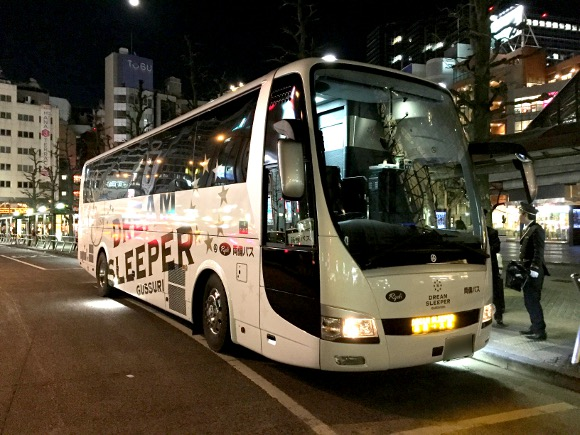
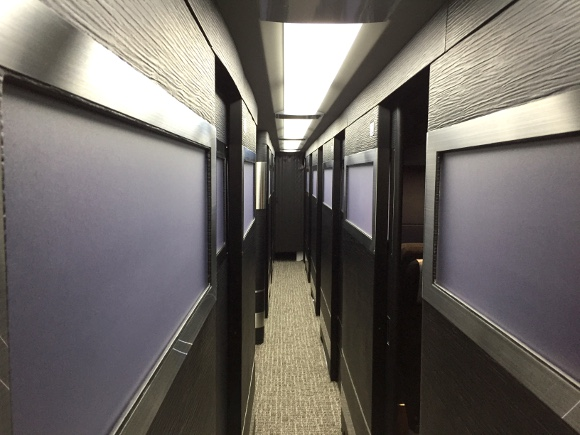
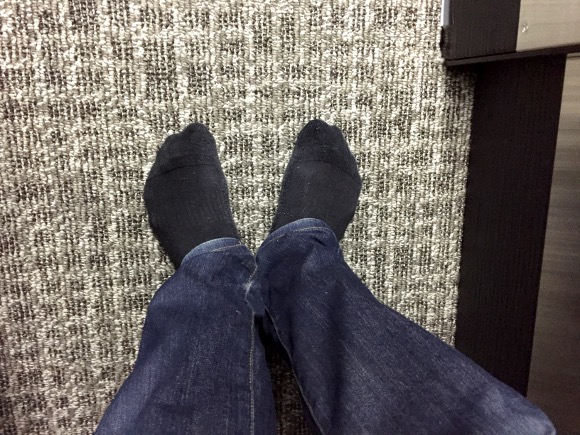
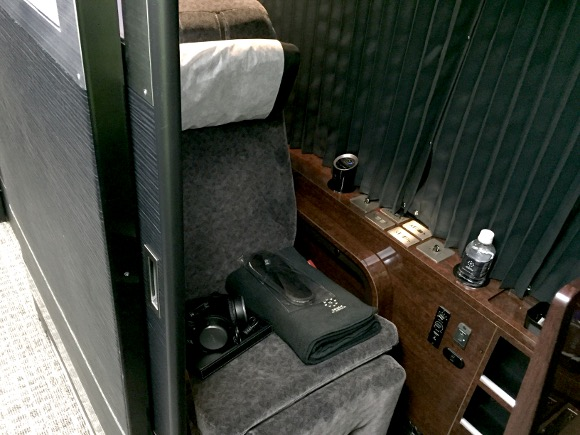
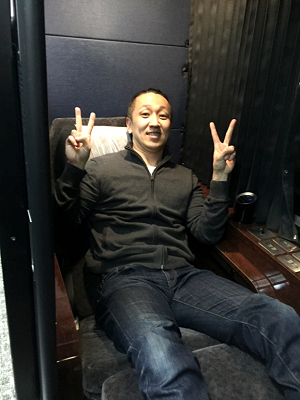
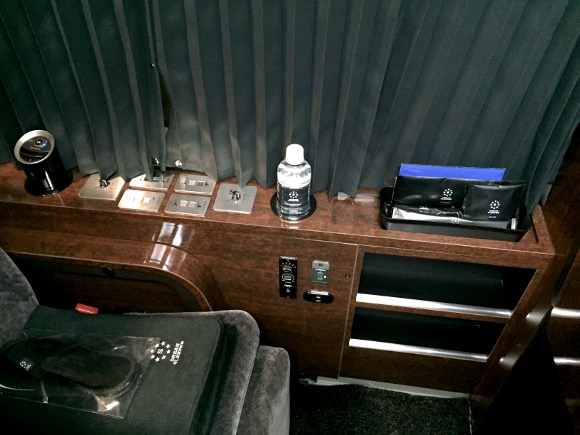
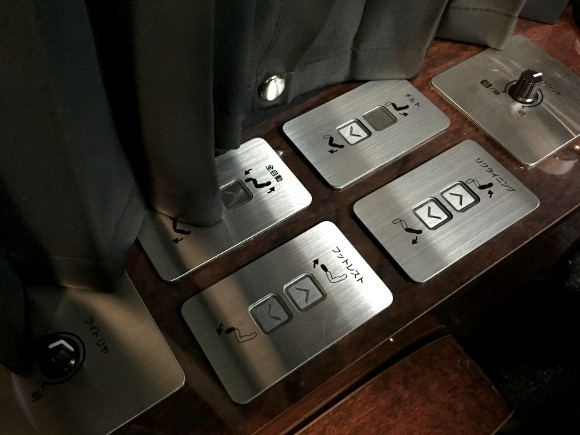
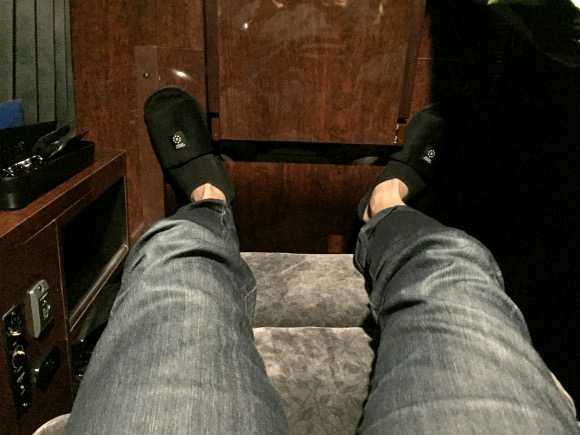
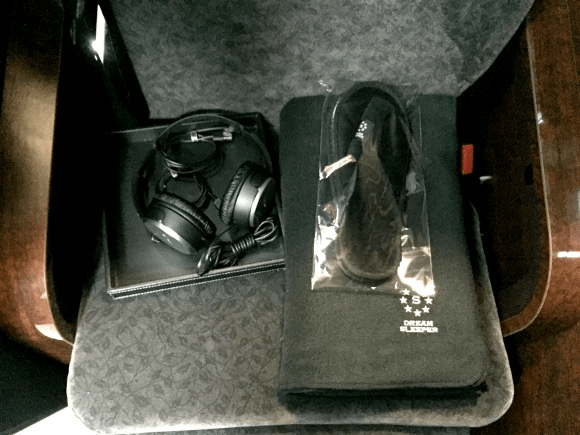

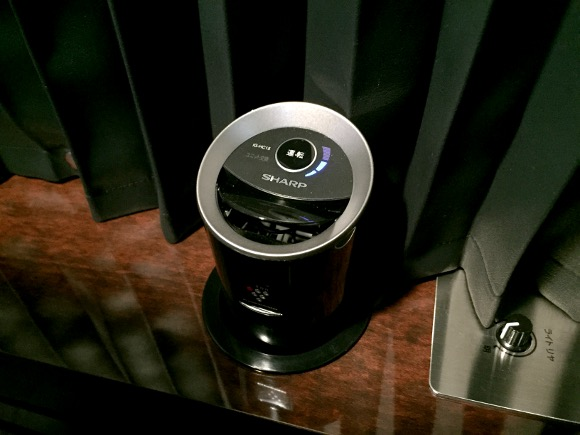
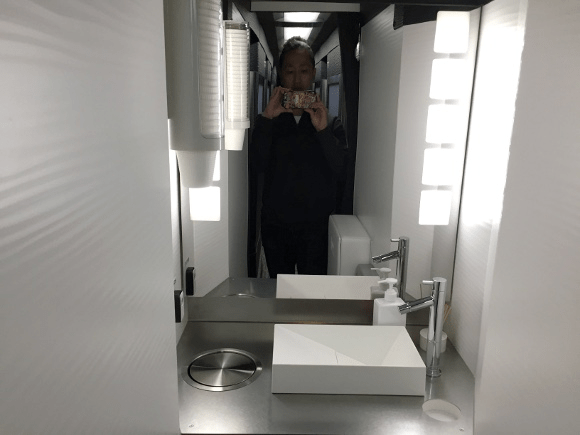
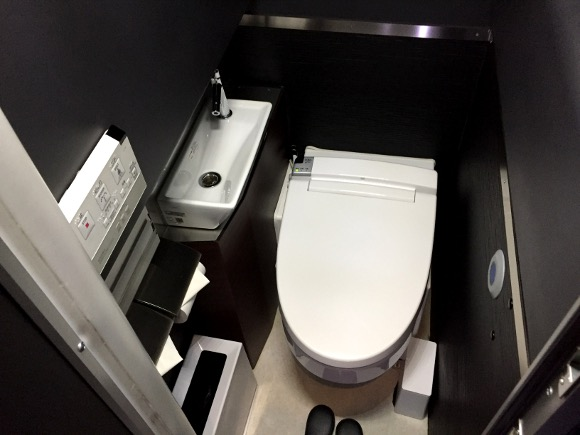
 Japan’s Moonlight Nagara train service ends, leaving a hole in overnight rail travel
Japan’s Moonlight Nagara train service ends, leaving a hole in overnight rail travel Japan’s ultra-classy overnight bus gives you your own sleeping pod【Photos】
Japan’s ultra-classy overnight bus gives you your own sleeping pod【Photos】 West Japan’s new sleeper train looks more luxurious than most hotels
West Japan’s new sleeper train looks more luxurious than most hotels Osaka to Fukuoka for less than 40 bucks? It’s possible with Japan’s overnight ferry
Osaka to Fukuoka for less than 40 bucks? It’s possible with Japan’s overnight ferry Nozomi Shinkansen bullet train abolishes low-priced unreserved tickets during peak travel seasons
Nozomi Shinkansen bullet train abolishes low-priced unreserved tickets during peak travel seasons McDonald’s Japan’s new pancake pie is a taste sensation
McDonald’s Japan’s new pancake pie is a taste sensation Japanese cosplayer creates amazing outfit: Sailor Moon’s transformation sequence!【Photos】
Japanese cosplayer creates amazing outfit: Sailor Moon’s transformation sequence!【Photos】 Studio Ghibli unveils new goods that tip the hat to The Cat Returns
Studio Ghibli unveils new goods that tip the hat to The Cat Returns Two things to do, and two things not to do, when leaving a traditional Japanese inn
Two things to do, and two things not to do, when leaving a traditional Japanese inn Orange Juice Crisis ’24 – Japan’s OJ supplies drying up
Orange Juice Crisis ’24 – Japan’s OJ supplies drying up Starbucks at Shibuya Scramble Crossing reopens, but is it really bigger and better than before?
Starbucks at Shibuya Scramble Crossing reopens, but is it really bigger and better than before? Foreigner’s request for help in Tokyo makes us sad for the state of society
Foreigner’s request for help in Tokyo makes us sad for the state of society Studio Ghibli unveils massive T-shirt collection featuring top anime movie characters
Studio Ghibli unveils massive T-shirt collection featuring top anime movie characters Enjoy a Pokémon tea ceremony with new matcha goods featuring Poltchageist and Sinistcha
Enjoy a Pokémon tea ceremony with new matcha goods featuring Poltchageist and Sinistcha Red light district sushi restaurant in Tokyo shows us just how wrong we were about it
Red light district sushi restaurant in Tokyo shows us just how wrong we were about it Bad tourist manners at Mt Fuji Lawson photo spot prompts Japanese town to block view with screens
Bad tourist manners at Mt Fuji Lawson photo spot prompts Japanese town to block view with screens Japanese city loses residents’ personal data, which was on paper being transported on a windy day
Japanese city loses residents’ personal data, which was on paper being transported on a windy day One of Japan’s oldest castles now lets travelers spend night on the grounds, drink in its keep
One of Japan’s oldest castles now lets travelers spend night on the grounds, drink in its keep Ghibli Park now selling “Grilled Frogs” from food cart in Valley of Witches
Ghibli Park now selling “Grilled Frogs” from food cart in Valley of Witches McDonald’s new Happy Meals offer up cute and practical Sanrio lifestyle goods
McDonald’s new Happy Meals offer up cute and practical Sanrio lifestyle goods New definition of “Japanese whiskey” goes into effect to prevent fakes from fooling overseas buyers
New definition of “Japanese whiskey” goes into effect to prevent fakes from fooling overseas buyers Our Japanese reporter visits Costco in the U.S., finds super American and very Japanese things
Our Japanese reporter visits Costco in the U.S., finds super American and very Japanese things Japanese ramen restaurants under pressure from new yen banknotes
Japanese ramen restaurants under pressure from new yen banknotes All-you-can-drink Starbucks and amazing views part of Tokyo’s new 170 meter-high sky lounge
All-you-can-drink Starbucks and amazing views part of Tokyo’s new 170 meter-high sky lounge More foreign tourists than ever before in history visited Japan last month
More foreign tourists than ever before in history visited Japan last month New Pokémon cakes let you eat your way through Pikachu and all the Eevee evolutions
New Pokémon cakes let you eat your way through Pikachu and all the Eevee evolutions Disney princesses get official manga makeovers for Manga Princess Cafe opening in Tokyo
Disney princesses get official manga makeovers for Manga Princess Cafe opening in Tokyo Sales of Japan’s most convenient train ticket/shopping payment cards suspended indefinitely
Sales of Japan’s most convenient train ticket/shopping payment cards suspended indefinitely Sold-out Studio Ghibli desktop humidifiers are back so Totoro can help you through the dry season
Sold-out Studio Ghibli desktop humidifiers are back so Totoro can help you through the dry season Japanese government to make first change to romanization spelling rules since the 1950s
Japanese government to make first change to romanization spelling rules since the 1950s Ghibli founders Toshio Suzuki and Hayao Miyazaki contribute to Japanese whisky Totoro label design
Ghibli founders Toshio Suzuki and Hayao Miyazaki contribute to Japanese whisky Totoro label design Doraemon found buried at sea as scene from 1993 anime becomes real life【Photos】
Doraemon found buried at sea as scene from 1993 anime becomes real life【Photos】 Tokyo’s most famous Starbucks is closed
Tokyo’s most famous Starbucks is closed One Piece characters’ nationalities revealed, but fans have mixed opinions
One Piece characters’ nationalities revealed, but fans have mixed opinions We asked a Uniqlo employee what four things we should buy and their suggestions didn’t disappoint
We asked a Uniqlo employee what four things we should buy and their suggestions didn’t disappoint You can go surprisingly far on a single train leaving from Tokyo Station
You can go surprisingly far on a single train leaving from Tokyo Station Beautiful new luxury train for Ishikawa dazzles with gold leaf and lacquer interior
Beautiful new luxury train for Ishikawa dazzles with gold leaf and lacquer interior Shinkansen will require reservations for large suitcases, charge penalty fees for those without
Shinkansen will require reservations for large suitcases, charge penalty fees for those without Free Shinkansen tickets for kids travelling with parents during special JR promotion
Free Shinkansen tickets for kids travelling with parents during special JR promotion The ultimate Shinkansen trip: Riding Japan’s bullet train network from one end to the other
The ultimate Shinkansen trip: Riding Japan’s bullet train network from one end to the other Japan’s new luxury sightseeing train will show you part of the country most foreigners never see
Japan’s new luxury sightseeing train will show you part of the country most foreigners never see Pikachu, Hello Kitty Elected 2025 Expo Ambassadors to Osaka
Pikachu, Hello Kitty Elected 2025 Expo Ambassadors to Osaka One thing NOT to do in Kyoto if you’re headed there during the vacation period
One thing NOT to do in Kyoto if you’re headed there during the vacation period New private rooms on Tokaido Shinkansen change the way we travel from Tokyo to Kyoto
New private rooms on Tokaido Shinkansen change the way we travel from Tokyo to Kyoto Foul-mouthed video shows Japan’s legendary politeness shattered by train’s last run
Foul-mouthed video shows Japan’s legendary politeness shattered by train’s last run Tokaido Shinkansen ending in-train food/drink sales for all non-first-class-passenger cars
Tokaido Shinkansen ending in-train food/drink sales for all non-first-class-passenger cars Awesome Japanese wife “kidnaps” her husband as he leaves work…for his own good
Awesome Japanese wife “kidnaps” her husband as he leaves work…for his own good Disney Shinkansen coming to Japan’s rails, starts service this month
Disney Shinkansen coming to Japan’s rails, starts service this month Tokyo farewells Japan’s only double-decker Shinkansen with a special escalator at the station
Tokyo farewells Japan’s only double-decker Shinkansen with a special escalator at the station We travel across the city like royalty — Hiroshima streetcar turns into fancy, private dining area
We travel across the city like royalty — Hiroshima streetcar turns into fancy, private dining area This retro-cool Japanese sleeper train is now a super-cheap hostel right in downtown Tokyo
This retro-cool Japanese sleeper train is now a super-cheap hostel right in downtown Tokyo
Leave a Reply